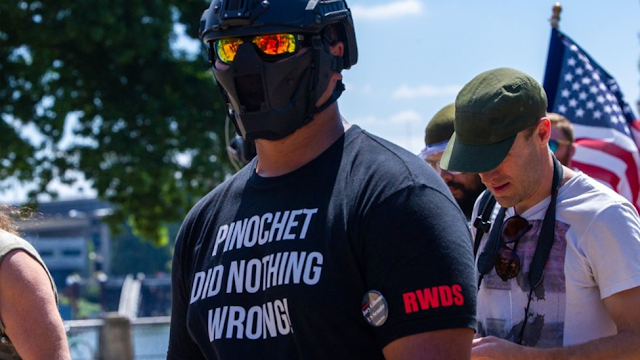Back In Black
Right-wing politicians in the past two years have attempted punitive action against protesters, i.e., the George Floyd riots, and more directly “movements” to the left, that destabilize elite control. The brutal increase in anti-protest bills at state levels were introduced, 81 in 34 states. New laws, such as those in Oklahoma and Iowa, granted immunity to drivers whose vehicles strike and injure protesters in public streets. A Minnesota bill would prohibit those convicted of unlawful protesting from receiving student loans, unemployment benefits, or housing assistance. In Florida, Governor Ron DeSantis signed sweeping legislation that toughened existing laws regulating public disorder and creating a harsh new level of infractions – a bill he has called “the strongest anti-rioting, pro-law-enforcement piece of legislation in the country.” This, nevertheless, reveals that the ruling elite fear mass politics, violent or nonviolent, since mobilization around issues of social justice weaken their domination of public policy (wagingnonviolence.org; nytimes.com).
Star Wars Revisited
Increasing Income Inequality
Biden’s
America Rescue Plan (ARP) does nothing to address the cancer of income
inequality. The bottom 50 percent of households in 2022 accounted for one
percent of the nation’s wealth. The top 10 percent accounted for 76 percent.
This was before the pandemic accelerated income disparity. More than 18 million
people now depend on unemployment benefits. Nearly 81 million people struggle
to meet basic household expenses, 22
million lack enough food, and 11 million indicate that they cannot make their
next house payment or rent. History has demonstrated what happens when income
disparities of this magnitude afflict a country – authoritarianism has great
appeal (sheerpost.com).
Sociology of Religion
In 2020, for the first time in history, fewer people in the US belonged to a church, mosque, or synagogue than did not belong. Just 47 of US adults now identify as members of a traditional religious home, down more than 20 percent in only two decades. Among people who belong to a specific church, the decline in Catholics (now 58 percent from 76 percent) was twice as much among members of Protestant denominations (now 64 percent from 73 percent). The decline in church affiliation is also steeper according to age – 36 percent of millennials belong to a church, compared with 58 percent of baby boomers and 50 percent of Gen X. Moreover, non-college graduates showed a more pronounced drop in church membership than those with college degrees, presumably, reflecting the church’s struggles to reach the working class. Democrats and Independents have seen greater declines in membership than did Republicans (America).









Comments